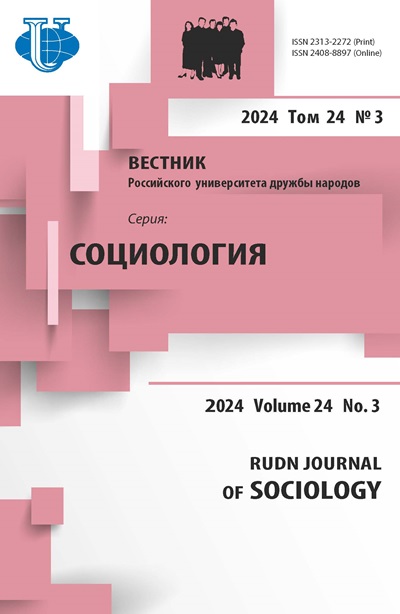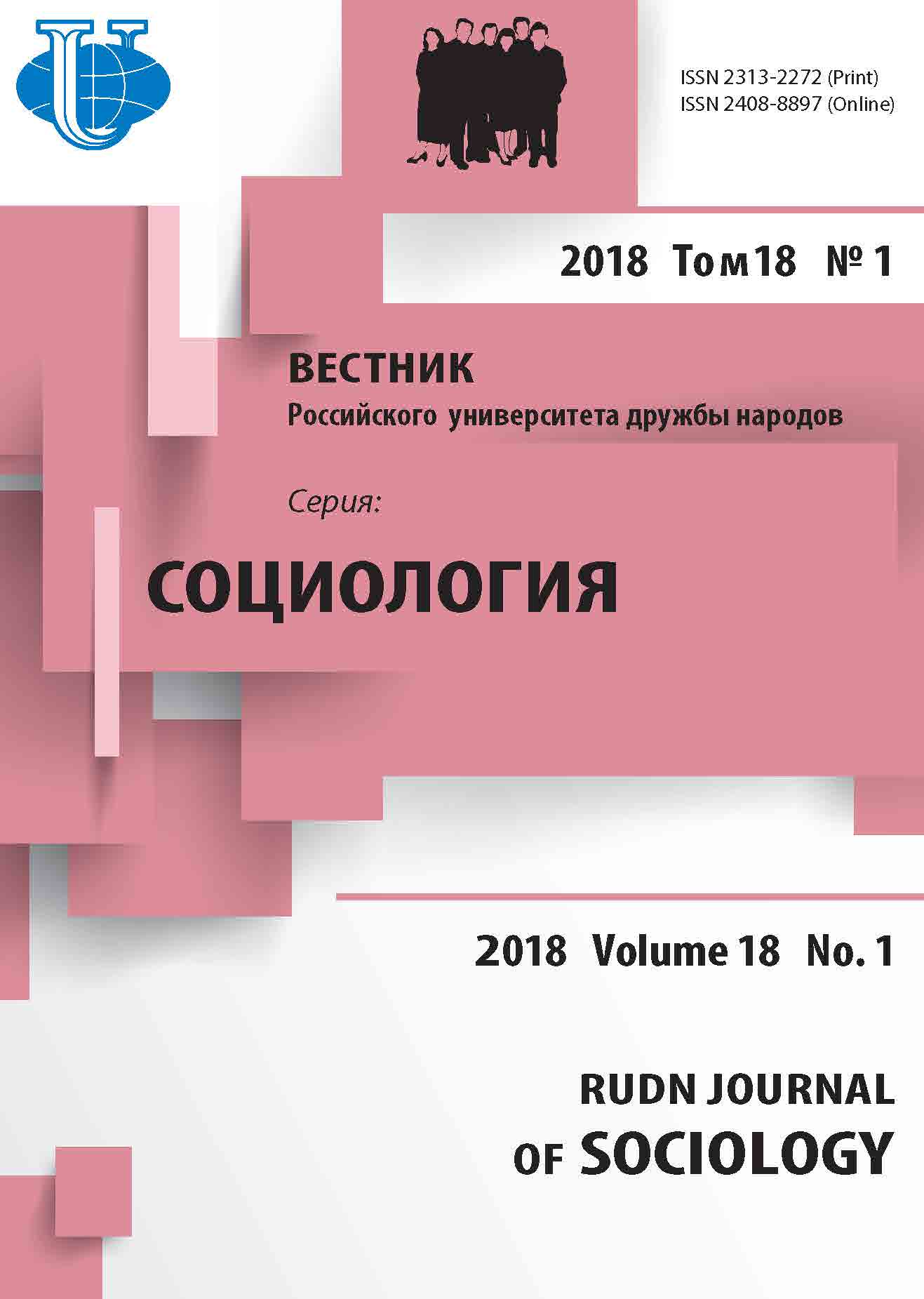THE STATE OF THE AMERICAN FAMILY: THE PARADOX OF HOW FAMILIES AND FAMILY VALUES ARE CHANGING WHILE STAYING THE SAME
- Authors: DeFrain J1
-
Affiliations:
- University of Nebraska-Lincoln
- Issue: Vol 18, No 1 (2018)
- Pages: 73-87
- Section: Contemporary society: the urgent issues and prospects for development
- URL: https://journals.rudn.ru/sociology/article/view/17827
- DOI: https://doi.org/10.22363/2313-2272-2018-18-1-73-87
Cite item
Full Text
Abstract
How is the American family doing today? The answer depends upon whom you are talking with and the social/political/cultural lens you are looking through. This article is written by an American professor emeritus of family studies who has studied and taught about families for more than forty years. The author has been married to his wife Nikki for fifty years and they have raised three daughters and are now active in an extended family which included four grandchildren and three sons-in-law. In this article, the author avoids talking about families from a political perspective because in America this kind of talk usually generates more heat than light. Even though the American media tends to focus only on problems and give all of us the impression that families in particular and life on the planet in general are in grave danger, after studying strong families in the U.S. and around the world for more than forty years, the author personally believes that the majority of families in America are doing well and are satisfied with their life together. Some families are just doing okay. And some, of course, are in deep trouble. Truth be told, all American families have problems, just as all families around the world have problems. And, as it is true from a global perspective, not all families in the U.S. are strong families. But all families in the U.S. have strengths and they use these strengths in their efforts to meet the challenges their family inevitably faces. In this article, the author begins looking at American families today from the top-down perspective - the macro-level - and follows that with a discussion from the bottom-up perspective - the micro-level. These two perspectives complement each other and give us a reasonably good answer to the question of how the American family is doing today. And these two perspectives give us a better understanding of the paradox that families and family values are changing in some ways while we stay, deep-down, basically the same in our families.
About the authors
J DeFrain
University of Nebraska-Lincoln
Email: jdefrain1@unl.edu
NE 68588-0236 USA
References
- Alcohol and public health (2016). http://www.cdc.gov/alcohol.
- Alcohol and sexual assault (2016). http://pubs.niaaa.nih.gov/publications/arh25-1/43-51.htm.
- Alcohol facts and statistics (2016). http://www.niaaa.nih.gov/alcohol-health/overview-alcoholconsumption/alcohol-facts-and-statistics.
- Amato P. Divorce and the well-being of adults and children. Family Focus. 2007: 52, F3-F4, F18.
- Amato P. The consequences of divorce for adults and children. Journal of Marriage and the Family. 2000: 62 (4), 1269-1287.
- American Association of Family and Consumer Sciences. AAFCS: Connecting professionals, touching lives (2015). https://www.aafcs.org/AboutUs/FAQ.asp.
- Antonovics K., Town R. Are all the good men married? Uncovering the sources of the marital wage premium. American Economic Review. 2004: 65 (1), 137-154.
- Australian Bureau of Statistics. What is a family? (2013) http://www.abs.gov.au/ausstats/ abs@.nsf/Products/6224.0.55.001~Jun%202012~Chapter~What%20is%20a%20Family%3F.
- Behavioral health trends in the United States: Results from the 2014 National Survey on Drug Use and Health (HHS Publication No. SMA 15-4927, NSDUH Series H-50). http://www.samhsa.gov/data.
- Berman J. What makes a family? Children, say many Americans (2010). http://abcnews.go.com/ WN/defines-family-children-Americans-survey/story?id=11644693.
- Braithwaite D. Braithwaite delves into voluntary kin (2008). http://scarlet.unl.edu/p=872.
- Casas C., Stinnett N., DeFrain J., Lee P. Family strengths in Latin America. Family Perspective. 1984. Winter.
- DeFrain J., Asay S.M. Strong Families Around the World: Strengths-based Research and Perspectives. London: Routledge/Taylor & Francis Group; 2008.
- Empowering victims and survivors (2016). http://www.ncadv.org.
- Families in Australia. Canberra: Department of Prime Minister and Cabinet, 2008.
- Family. http://www.merriam-webster.com/dictionary/family.
- Hetherington E.M., Kelly J. For Better or Worse: Divorce Reconsidered. New York: W.W. Norton; 2002.
- Holtzman M. The family definitions continuum. Family Focus. 2005. June.
- How many people die each year from drug usage? (2016). http://teens.drugabuse.gov/nationaldrug-facts-week/how-many-people-die-each-year-drug-usage.
- Howard J. In A. Gore, T. Gore. The Spirit of Family. New York: Henry Holt (back cover); 2002.
- Marital events of Americans: 2009. American Community Survey Reports. http://www.census.gov/ prod/2011pubs/acs-13.pdf.
- National marriage and divorce rate trends (2013). http://www.cdc.gov/nchs/nvss/marriage_ divorce_tables.htm.
- Olson D.H., DeFrain J., Skogrand L. Marriages and Families: Intimacy, Diversity, and Strengths. New York: McGraw-Hill Higher Education; 2018.
- Popenoe D., Whitehead B.D. The State of Our Unions. Piscataway, NJ: National Marriage Project, Rutgers University; 2010.
- Rank M.R., Hirschl T.A. The economic risk of childhood in America: Estimating the probability of poverty across the formative years. Journal of Marriage and the Family, 1999: 61, 1058-1067.
- Skogrand L., DeFrain N., DeFrain J., Jones J.E. (2008). Surviving and Transcending a Traumatic Childhood: The Dark Thread. London: Routledge/Taylor & Francis Group; 2008.
- Statistical Abstract of the United States (2006). http://www.census.gov.
- Statistical Abstract of the United States (2008). http://www.census.gov.
- Statistical Abstract of the United States (2009). http://www.census.gov.
- U.S. Census Bureau (2016): Frequently asked questions. https://www.census.gov/hhes/www/ income/about/faqs.html.
- Waite L.J., Gallagher M. The Case for Marriage: Why Married People are Happier, Healthier, and Better off Financially. New York: Doubleday; 2000.
- Yoo Y.J., Lee I., Yoo G. How strong families encounter social challenges in the Republic of Korea. In J. DeFrain, S.M. Asay (Eds.) Strong Families Around the World: Strengths-based Research and Perspectives. London: Routledge/Taylor & Francis Group, 2008.
- Zubkov V. Russian families: Historical and contemporary perspectives on problems and strengths. In J. DeFrain, S.M. Asay (Eds.) Strong Families Around the World: Strengths-based Research and Perspectives. London: Routledge/Taylor & Francis Group, 2008.














